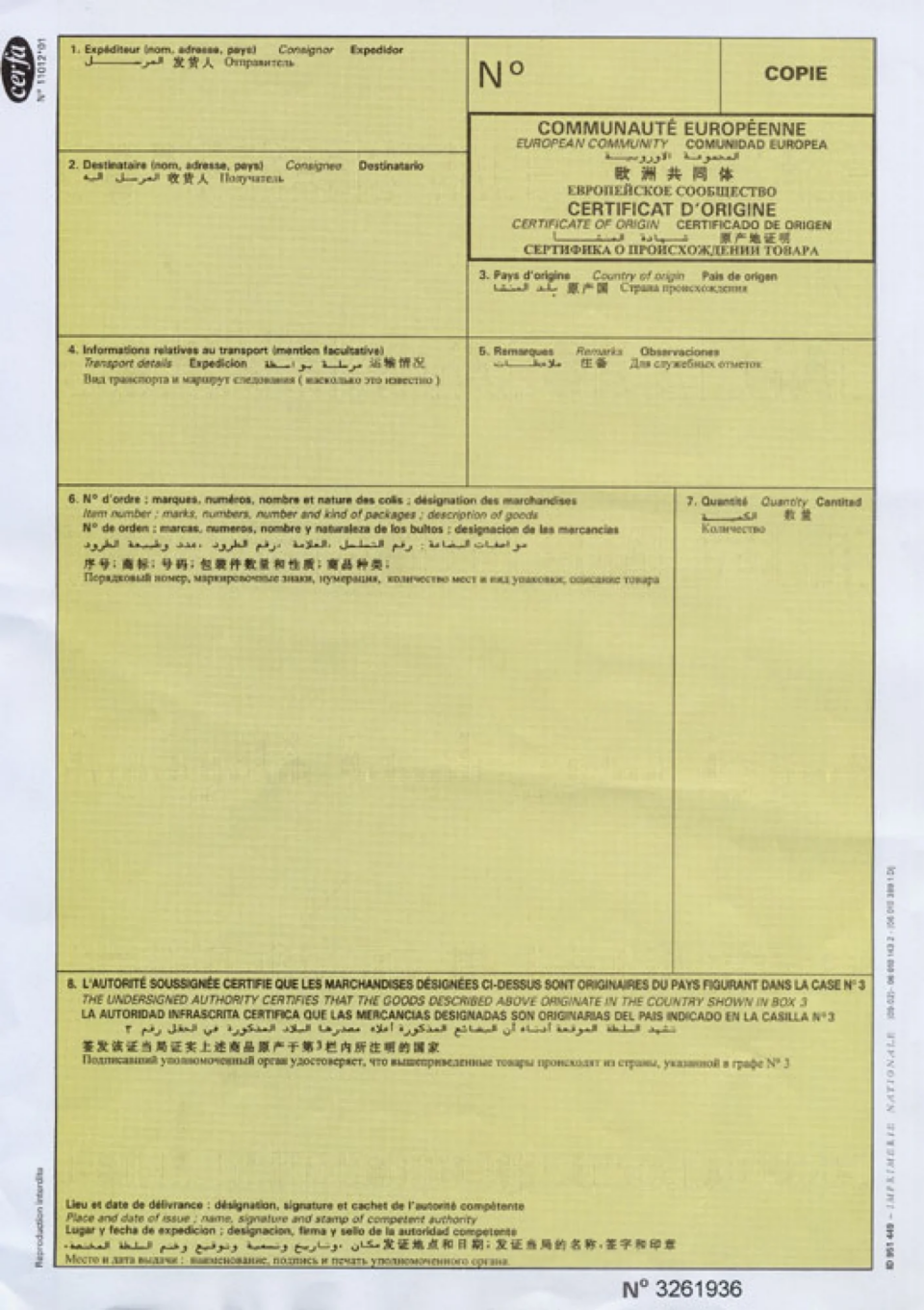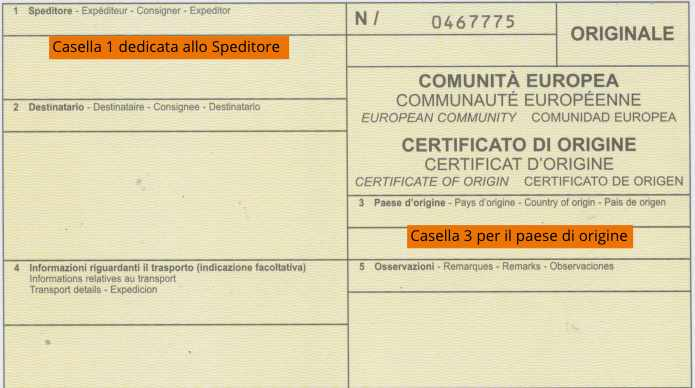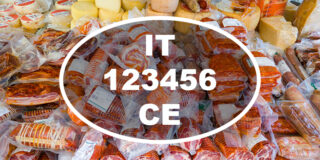In order to export from Italy, food products must meet Regulations (EC) 854/2004 and 882/2004.
These regulations must be complied with not only by the producer of the good, but also by the entire supply chain (logistics, packaging, packing, etc.).
International rules for safe food production are contained in the Codex Alimentarius of the international body coordinated by the FAO (World Food and Agriculture Organization) and the WHO (World Health organization). Within the Codex Alimentarius are defined, among others:
- The basic procedures for minimizing throughout the food chain the risk of microbiological, physical and chemical hazards: these are the Hazard Analysis and Critical Control Point (HACCP) procedures;
- general international standards (such as the one on “Rapid freezing of gutted and uneviscerated fish”);
- The management of the official list of food additives (GSFA);
- The determination of the maximum limit of veterinary active ingredients and pesticides (MRLs);
- topic guides (such as “Certification and Inspection Systems for Food Import and Export”).
The intergovernmental organization World Organization for Animal Health (OIE) is concerned with the improvement of animal health worldwide; it is recognized as a reference body by the World Trade Organization (WTO).
Compliance with these regulations is a prerequisite, but in many cases and for many countries it is not sufficient. Each country issues specific regulations on the import of certain products:
- sometimes these regulations are aimed at consumer protection (think of existing restrictions on trade in products containing GMOs)
- in other cases to the creation of barriers to the defense of local production.
In addition, regulations are also constantly and constantly evolving based on factors such as weather patterns (which may result in abnormal conditions with respect to the harvest), technological innovation, exchange rates, retaliatory policies, etc.
Regulations regarding exports to third countries are constantly evolving. Key sources of information include the Ministry of Health, Regions, Chambers of Commerce, Italian Embassies in relevant countries, etc.
Regarding documentation of shipments, it is suggested to avoid cancellations and inquire about local policies in terms of allowable variations between weight and value indications on invoices, import licenses and the actual weight of the goods.
Specific documents and procedures, usually simplified variants of standard procedures and records, are provided for temporary introduction of products into a country (e.g., for participation in trade fairs, events, conferences, trade samples).
Certificate of Origin
For the export of some products, the importer may require a “Certificate of Origin”; such a requirement may be imposed by the regulations in force in the country receiving the goods or be a specific request of the importer for greater protection of the purchased good. Even agri-food products do not escape this practice.
The purpose of the Certificate of Origin is to prove the origin of exported goods on the basis of evidentiary documentation and/or statements made by the exporting companies; it does not attest to the export of the goods.
The document has the value of a declaration in lieu of affidavit, in accordance with Article 47 of Presidential Decree No. 445 of December 28, 2000, and therefore are issued before a public official and, consequently, the declarant is subject to criminal liability in the case of false acts or false statements.
The declaration must be made by the legal representative (as shown in the position of the Business Registry) or a proxy. In addition, the issuing Chamber of Commerce cannot be held responsible for any discrepancies between the properly issued Certificate of Origin and the conditions set by the client.
The issuance of the non-preferential Certificate of Origin in Italy is attributed to the Chambers of Commerce Industry Handicraft and Agriculture, hereinafter referred to as Chambers of Commerce, pursuant to Law No. 580 of December 29, 1993, as amended.
It can be obtained from the Chamber of Commerce of the relevant territorial district, in relation to the registered office, operational office or local unit of the enterprise, whether it is a sole proprietorship, a company with legal personality, a customs agent or a fiscal representative appointed by the exporter.
Where required by trade and export requirements, the certificate of origin may also be issued to individuals or entities not required to be registered in the Commercial Register who are called upon to export goods – in any capacity – to countries requiring certification of origin.
In this case the competence of issuance is delegated to the Chamber of Commerce where the person has its residence or headquarters, and in the case of individuals not resident in Italy at the Chamber of Commerce where the person is with the goods purchased in Italy.
The applicant may also obtain the issuance of a certificate of origin:
- from the Chamber of Commerce where it is located with the goods to be shipped abroad and the relevant supporting documents of origin. In this case, prior authorization from the territorially competent Chamber of Commerce is required.
- by the chamber of commerce in whose district a foreign enterprise has a branch office or local unit, as shown in the Chamber of Commerce’s Register of Companies.
Applicant means:
- The shipper designated in the certificate of origin;
- The customs agent delegated by the consignor designated in the certificate of origin;
- the freight forwarder or fiscal representative with registered office or local unit in the Province, delegated by a foreign firm.
The applicant is, therefore, the person who signs the certificate application (whether the legal representative or attorney of the company or the formally delegated shipper or fiscal representative). The applicant who signs the application appears in box (1) of the certificate of origin, either as the shipper or as the person acting on behalf of the shipper.
On the contrary, any intermediary parties in charge of instructing the application and submitting it to the Chamber of Commerce, whether in paper or electronic form, will – if applicable – affix their signature only in box 9) of the application.


Rules of origin
Non-preferential rules of origin for certificates issued for export products are referred to in the UNHRC (Union Customs Code-EU Regulation 952/2013) only by Article 61.3.
As a general rule, when there is no specific requirement to apply the rules of the country of destination of export goods or other methods of identifying origin by last substantial processing, reference is made to the provisions of Article 60.1 and 60.2 of the UNHRC regarding products wholly obtained or having undergone last substantial processing sufficient to confer origin.
To ensure uniform application at the level of member states on rules of origin for export products, the European Chambers of Commerce have agreed to apply rules set out in a European Guideline that is inspired by the general principles dictated by the UNHRC (rules applicable to import products) and more specifically Annex K of the Kyoto International Convention.
Special rules of origin
For some specific cases, the UNHRC and its implementing regulations establish special rules for the attribution of origin for imported products:
- Rule of the largest quantity of materials (Art. 33 paragraph 3 Reg. (EU) 2446/2015);
- Minimum operations not conferring origin (Art. 34 Reg. (EU) 2446/2015);
- Accessories, spare parts and tools (Art. 35 Reg. (EU) 2446/2015);
- Neutral items and packaging (Art. 36 Reg. (EU) 2446/2015);
- Delivery of disassembled goods, even in multiple shipments, which constitute a single good for the purpose of origin.
The same cases are similarly addressed in the European guidelines for export certificates, and these same principles are also applied at the national level.
Usefulness of the certificate of origin
- Certificates of origin are only intended to prove the origin of goods and do not themselves certify the export of goods. They may be used as supporting documents in the issuance of additional certificates of origin issued by other Chambers of Commerce.
- Since the guilloche form of the certificate of origin is normally used as the original to meet customs requirements, copies made and issued in accordance with the original have the same value as the original. No more than one original may be issued for the same shipment.
- The certificates of origin issued by the Italian Chambers of Commerce are those used in relations between the European Union and Third Countries, based on the provisions of Article 61.3 of the Customs Code of the European Union (UNCT – Regulation (EU) 952/2013) and in application of the provisions of Annex K of the Kyoto International Convention on the simplification and harmonization of customs procedures.
- Certificates of origin are intended, exclusively, to prove the origin of goods on the basis of evidentiary documents or statements made by companies and are not to be considered a document accompanying the goods. Under no circumstances can the Chamber of Commerce be held responsible for any discrepancies between properly issued certificates of origin and the conditions set by documentary credits.
- At your request, when special business needs so require, the Chamber of Commerce may also issue certificates of origin intended for other member states of the European Union. In addition, when necessary for the purpose of preserving trade secrecy, for a pre-export transaction, issuance is also permissible if the first consignee of the goods is based in Italy. In the latter case, the wording “to order” should be used since the final foreign destination cannot be traced.
Certificate of analysis
Certificate that tests have been carried out by a competent laboratory in the country of origin of the product (in some cases it may be required that the laboratory be from a specific body, or accredited at a local ministry or in Italy at the ACCREDIA laboratory accreditation body), or at a laboratory located in the country of destination of the goods.
The tests may relate to product or packaging characteristics (physical, chemical, microbiological, etc.).
The certificate, signed, usually contains information about:
- references of the laboratory that performed the analysis
- references of the technician who performed the analysis
- date of the analysis
- origin of the goods
- description of the samples and their characteristics
- results of the tests
- additional indications (e.g., compliance with certain regulations or analytical methodologies, if requested by the client).
Health Certificate
To export:
- Live animals
- Animal products not for human consumption
- Meat and meat products
- Milk and milk products
- Other foods of animal origin (e.g., fish industry products, honey)
- Feed
Producers must provide sanitary guarantees to the authorities of importing countries through health certificates that accompany the goods.
The certificates are issued by the competent local health authority according to formats that are also defined by the various countries depending on the product category.
Guarantees are established by the importing country based on its national health regulations and compliance with international rules set by the Standards Setting Bodies (OIE and FAO).
The reference is a plan of controls, which covers the entire production chain (from raw material to packaged product) defined downstream of a negotiation between the parties (Veterinary/Health Authorities of the importing country and Italian or European Union Veterinary/Health Authorities).
Phytosanitary code
Fruit and vegetables destined for countries outside the European Union must undergo phytosanitary control, in cases where the phytosanitary legislation of the country of reference requires it.
The phytosanitary certificate is issued by the Phytosanitary Inspectors of the Phytosanitary Consortium, by regional delegation. The request for inspection of material intended for export must be requested in advance (usually 10 days) so that the necessary controls can be carried out and documented. The request shall include the data: of the exporter and consignee, of the transportation messenger, point of entry into the consignee country, number and nature of the packages being shipped, expected day of shipment, name of the product (including the Latin botanical name in the case of plants or seeds), country of origin of the product, indications of marks and lots.
The certificate is accompanied by the receipt for payment of the phytosanitary card.
Checks are carried out based on the procedures of the importing country.
Once a favorable opinion is obtained, the certificate is issued, which also states that the goods are free of quarantine organisms.
Gluten Free Certificate
For the Gluten Free Spiga Barrata (Grain Crossed) certification, the AIC (Italian Celiac Disease Association) issues (since October 2012) international concessions for the European territory (European Union plus Norway and Switzerland) according to a precise specification that provides:
- verification and approval of each label
- periodic audits at all relevant production facilities.
Each licensee product has a code to go along with the Barred Ear logo.
Organic certification for non-EU export
Internationally, there is no standard available that applies to all countries and no mutual recognition system, although some countries are working to identify a common matrix.
Several organic product certification bodies, including Italian bodies, have accreditations (recognition) against standards in place in other countries.
Many countries have developed internal standards for organic production and labeling of organic products, such as:
- EU COUNCIL REGULATION (EC) No. 834/07 of June 28, 2007.
- Japan – JAS Organic standards (Japan Agriculture Standard)
- United States – NOP (National Organic Program)
- Canada – OPR (Canada’s Organic Products Regulations)
- China – China Organic Product Certification Mark
Halal and Kosher Certification
The concept of Halal (licit) is contrasted with Haram (illicit).
Halal-certified products are considered lawful in that they guarantee on the origin of each individual ingredient/component and the production chain of the product that is purchased and used, ensuring its adherence to religious requirements.
Kosher, on the other hand, refers to the set of religious rules that govern the nutrition of observant Jews. The Hebrew word “kasher or kosher” means suitable, appropriate or correct. Kosher certification is obtained following an inspection process by a specialized rabbinic body that oversees the production of a food to ensure that it conforms to Jewish food rules.
Read our article on Delizie Dal Mondo’s Blog
We at Demix Group passionately support the development of various projects that have a focus on creating and bringing to market innovative solutions to support the production of foods that encourage the adoption of the diets mentioned in this article, among which we mention that of “Lifestyle Store“
IF YOU WOULD LIKE TO RECEIVE INFORMATION REGARDING APPLICATION PROCEDURES OR FURTHER DETAILS PLEASE CONTACT US!




